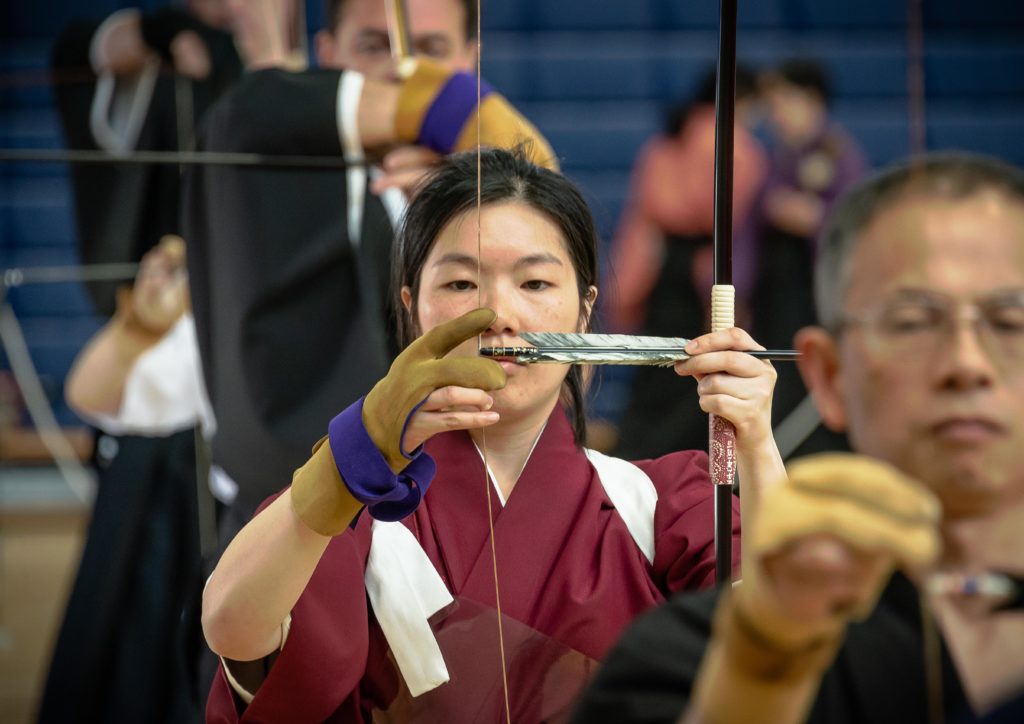
Bow paid a visit to the White Rose Kyudojo in London
If you are a regular club archer, a Saturday morning at the White Rose, in a sports hall in south-east London, would not be that unfamiliar. The targets are set-up, the bows are unpacked and the whole club is currently preparing for a major event abroad. But things on the surface are obviously very different. The clothing, for one. The bows, for another.
In most respects, the White Rose Kyudojo is an archery club. But within the range, nothing, from the way you pick up your arrows to the way you pull them from the target, is by chance. Nothing.
The arrows are placed on the ground in a specific order – as I watch one of the juniors begin to shoot, a senior archer comes and moves one of his arrows less than an inch.
Everything is carefully delineated and marked out. There is not the space here to go through the many dozens of steps, each with a specific name in Japanese, that describes a complete kyudo shot. But watching it, here in near silence, you get a sense of the depth of the process, and the difficulty required to complete it perfectly.
Kyudo – pronounced ‘cue-dough’, by the way – literally means ‘the way of the bow’. Older, military traditions in Japan were called kyujitsu, which means something closer to ’skill with the bow’, the jitsu part referring to a fighting context.
It is a martial art in the distinctly East Asian sense and is best seen alongside the far better known Japanese combat sports like judo and karate.
I am the guest here of Jeff Humm, one of the most experienced kyudokas in the group, who has been practising for 29 years. He is also an experienced kendo master in the UK, and was kind enough to compare the two for me. “After kyudo, I actually often feel more tired than when I do kendo, but uplifted. There’s an element of escapism to it, too. The biggest competition here is not to lose to myself, you could say.”
Today many archers practise kyudo as a sport, with marksmanship being paramount. However, the goal of most devotees is seisha seichu; roughly, “correct shooting is correct hitting”.
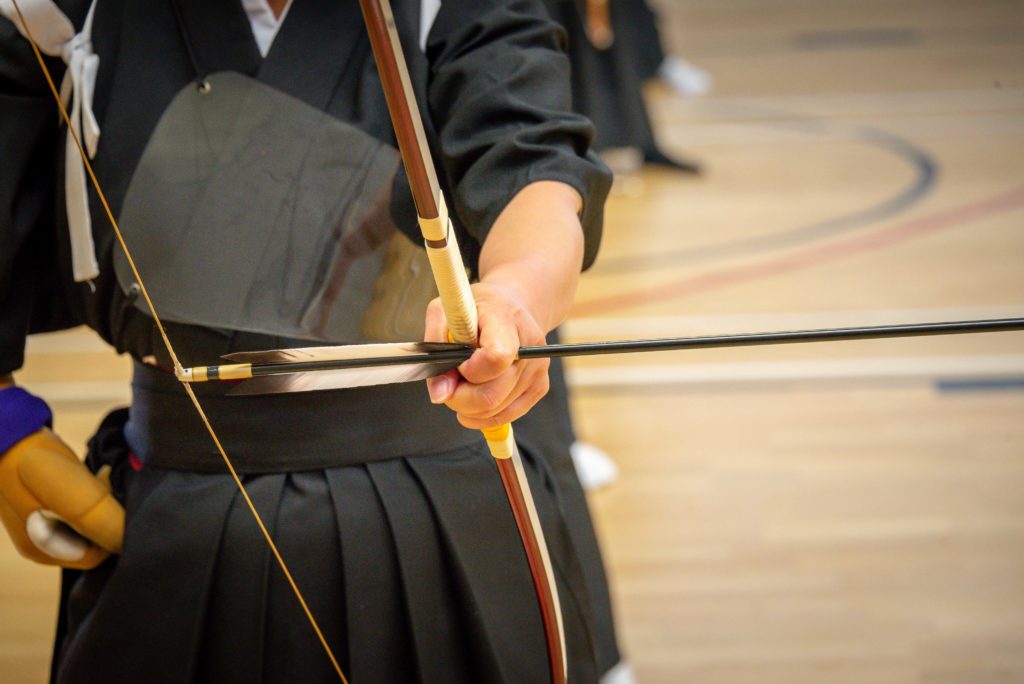
The form is the essential element. Unlike the more flexible forms of Western archery, kyudo is formalised into distinct steps which must be followed in a precise and distinct order.
Different schools emphasise different aspects of the art. The version best known in the West is what Humm calls ‘sport’ kyudo or setei: a basic modern version of the other three, and more grade oriented.
According to the Nippon Kyūdō Federation, which governs it, the supreme goal of kyudo is achieving a state of shin-zen-bi, which roughly translates as “truth-goodness-beauty”. The idea is that when archers shoot correctly, with ‘truth’, good spirit and attitude, beautiful shooting will naturally follow (this idea, shorn of spiritual context, is present in elite Western archery traditions too).
The White Rose, however, practice a specific older school of kyudo known as Honda-ryu, after the original practitioner. Their master, Tokuda Masahiko, is now 91 but no stranger to technology – he frequently appears over Skype, and can apparently “tell if someone is wearing the wrong colours from across the room.”
Of all the Japanese martial arts, kyudo is relatively little known in the West, certainly compared to the combat forms like judo and karate. It gradually expanded after the second world war to a few other countries around the world.
In the UK, kyudo is a slightly fragmented tradition with a small handful of clubs, perhaps 100 practitioners, and no single overall governing body. The White Rose Kyudojo split from the main UK federation many years ago to study the traditional forms and is overseen as such, and graded, directly from the masters in Japan – indeed, most members have been to Japan at some point specifically to study and train.
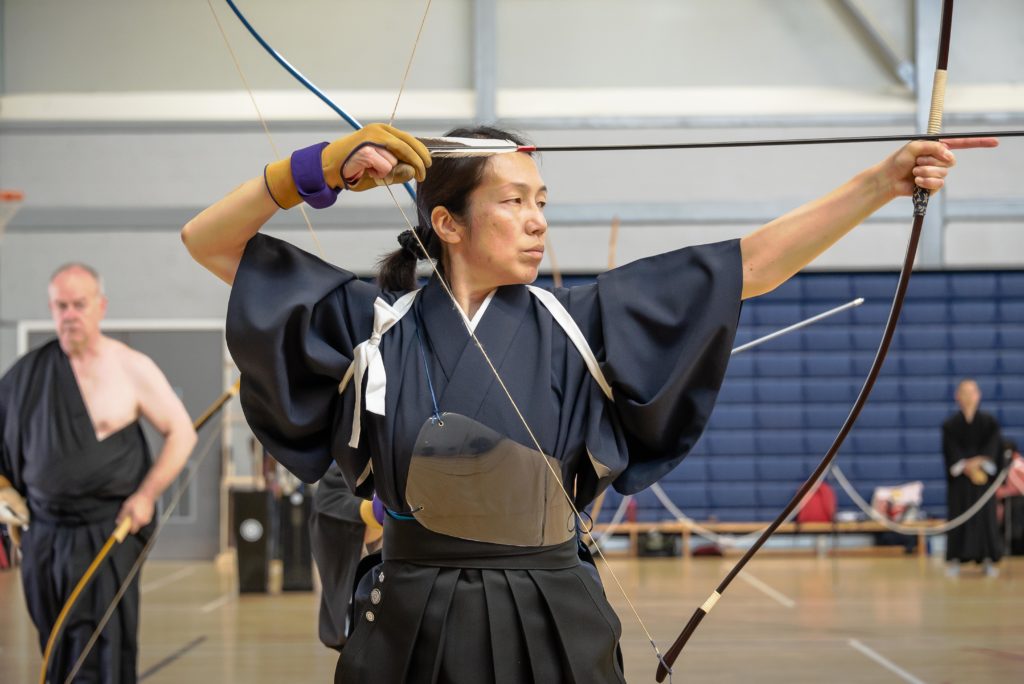
On the morning I visited, archers shot in groups of two or three, one at a time, in order. The groups of three shot in this order: the second most experienced leading off, the least experienced in the middle, and the most experienced shooting last – remarkably similar to how World Archery competition teams plan their shooting order.
The reasons are the same: to inspire confidence in the team, inspire the least experienced to shoot well, and to anchor the team with a final strong performance, with the idea that a wave of confidence will ripple across the three archers.
There is a performative aspect to kyudo. “We’re looking for good arrow flight, good speed and penetration but we’re also trying to get something of the essence of the person.” said Humm.
The very experienced can practice at home or on other ranges, but kyudo is very much something done in a group. Unlike other archery, this is a display for an audience; your club mates so that they can learn, and your peers in order that you might be assessed.
Grading might happen once or twice a year, and there is a programme of competitions & events around the world. Depending on your level, hitting the target may not be an essential component of moving up a grade, in a discipline where form is more important.
One White Rose member also practices Western archery, and I noticed he hit the target more than most of the others. “The hit is part of it, but not all of it. You could still pass.” said Humm.
Most of the archery equipment is sourced directly from Japan. Like most East Asian arrows, kyudo ya are traditionally made from bamboo, with bird feather fletchings – although many now train with carbon arrows (indeed, Easton make a special shaft designed specifically for the sport.)
Uniquely, kyudo arrows are prepared and shot in pairs; the haya and otoya using feathers from different sides of the bird: the haya is supposed to spin clockwise, and the otoya anti-clockwise.
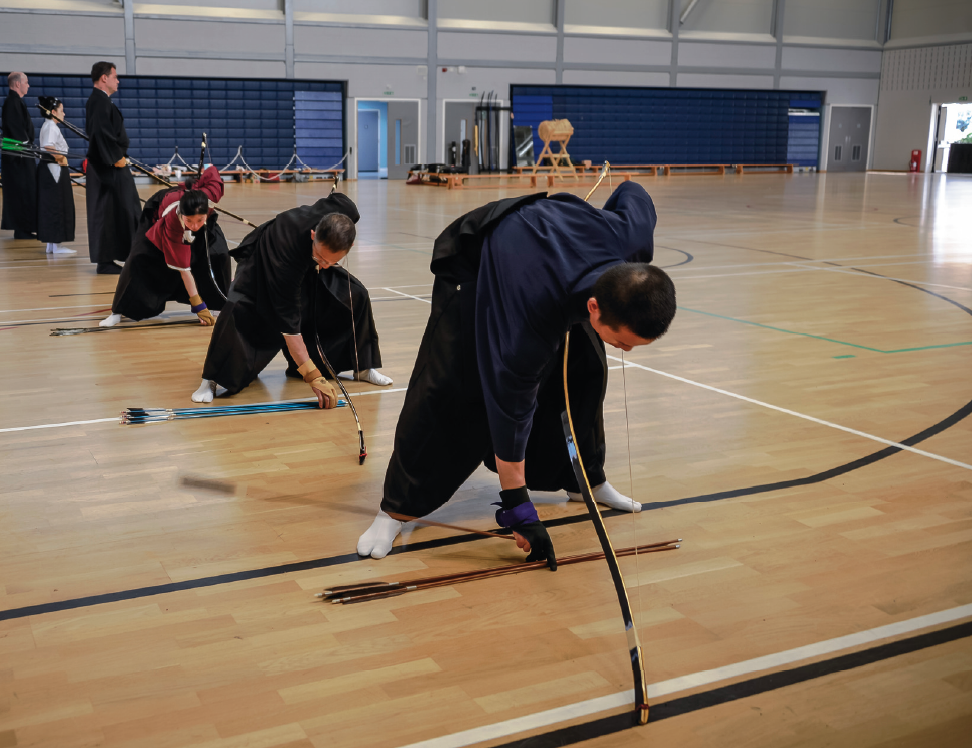
This is apparently to stop the arrows landing in exactly the same position on the target. Apart from the clothes and the asymmetric yumi bow the most distinctive feature of kyudo is the glove, known as the yugake, which the archer uses to give the string a distinct twist. A top-level, hand-made yugake can cost £1000.
Most cursory studies of kyudo focus on the spiritual aspect of the sport, with that element being more important than hitting the target. This is partly since the publication of the 1948 book Zen In The Art Of Archery, by the German academic Eugene Herrigal, who studied in Japan with a kyudo master.
Herrigal’s book is by far the best-selling book of all time with the word archery in the title, although it is really a classic Western text about Zen Buddhism, using kyudo as a vehicle.
Because of Herrigal’s book (which, perversely, became influential in Japan once it was published there) many associate kyudo solely with the practice of Zen. Humm was keen to point out that was an aspect that was not taught directly. “If you’re looking for peace and enlightenment, well, we’re shooting bows and arrows. You may be able to find that on the way. But it might take you a while.”
The club takes beginners on twice a year, and works with them on a short range bale called a makiwara until confident they can begin to shoot on the range. The hierarchy of experience is clearly delineated in the ritual that precedes and closes each session; the most experienced senior hands are at the front, the less experienced in the middle, the least experienced in a white robe at the back. I caught a sense of what it might mean to move up a row, and the difficulty of achieving it.
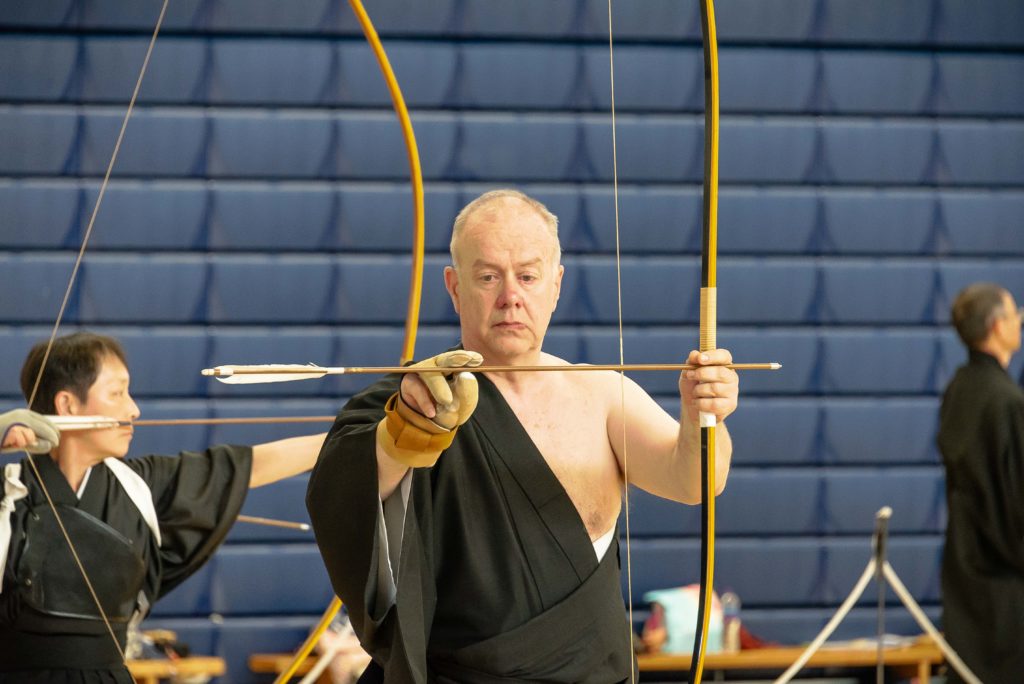
While kyudo forms are proscribed, they are not entirely immovable; the club is currently preparing to work with its first wheelchair user, and has modified one of its forms to accommodate its most senior member who is no longer able to kneel to shoot.
Japanese archery is syncretic and pulls from multiple philosophical and religious traditions: the association with the sacred peculiar to Shinto, the traditions of Chinese civil archery and the moral self-improvement of Confucianism, the cosmology of Daoism, the spiritual development of Buddhism, and the mental practice to achieve concrete results on the target from Zen. Unsurprisingly, many kyudokas in the West have a distinct interest in Japanese culture.
But kyudo is very much the opposite of a tourist experience. Perhaps the most formidable aspect of it is the dizzying levels of commitment to start to approach mastery.
The club has been running since 1986, and several members have been here 15 years and more. “People come, and ask me how long it would take to get as good as her.”, says Humm, pointing at one of the club’s older hands. “I say, maybe ten years?”
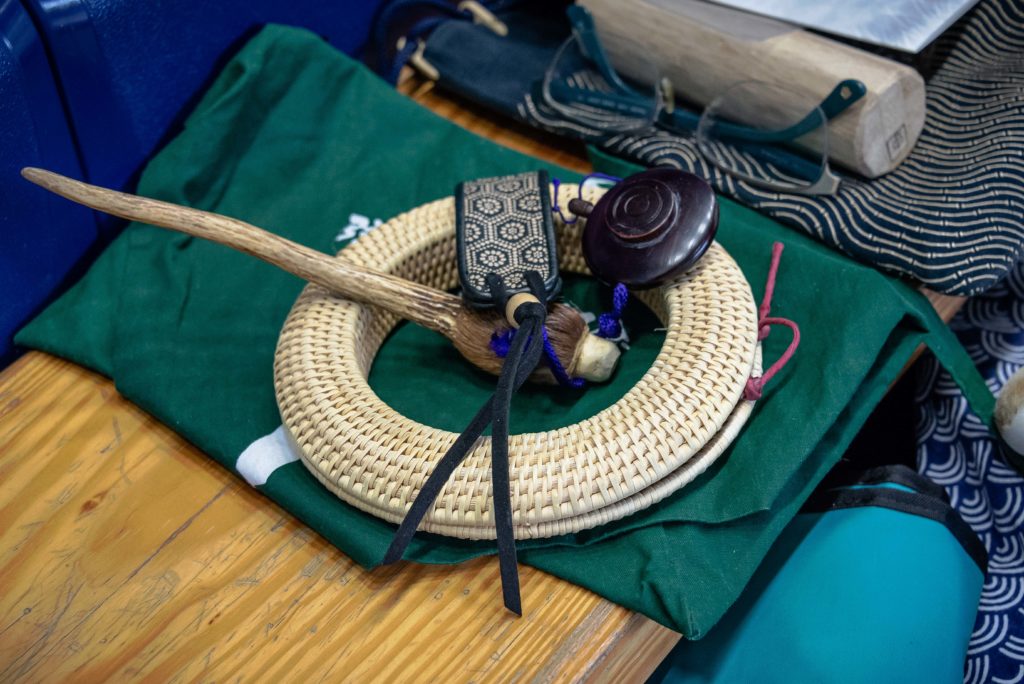
It is a daunting prospect for potential beginners. “You do get a few people who just want to wear the clothes, who want to feel like a samurai, who want a bit of the experience. But it simply doesn’t work like that. Once you get hooked, it’s a lifetime study.”
Archery in general is increasingly at odds with an Instagram-addled world that favours tasters of experience in adventurous subjects. Kyudo is perhaps the most marked expression of it; requiring, like all martial arts, a level of commitment and devotion that looks increasingly like something of a different age.


Very nice exposition of kyudo, not too starry-eyed but retaining the essence